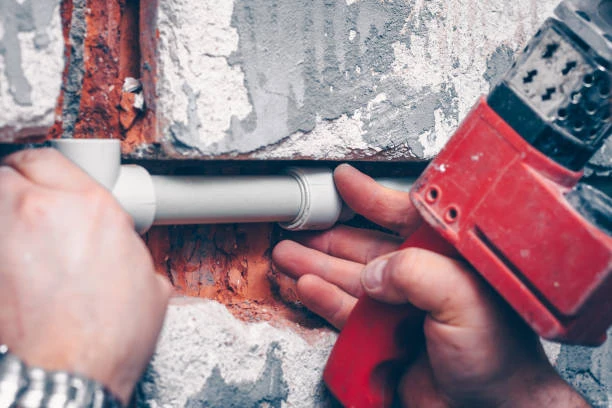Introduction to PPR Pipe Fittings
PPR pipe fitting are increasingly popular for water and heating systems due to their durability, non-toxic properties, and ease of installation. These fittings are widely used in plumbing and piping systems, providing leak-free, corrosion-resistant performance for various applications. The market for PPR pipe fittings has seen consistent growth, largely driven by increased construction activities, urbanization, and rising demand for eco-friendly solutions in infrastructure.
Understanding the PPR Pipe Fitting Market
PPR Fittings Explained
PPR pipe fittings are integral components in piping systems, providing joints and connectors for polypropylene random copolymer pipes. They come in a variety of forms, such as elbows, tees, couplings, and reducers, allowing for versatile application in both residential and industrial settings. Known for their durability and heat resistance, PPR fittings are popular in both hot and cold water applications.
Primary Applications of PPR Pipe Fittings
The primary applications of PPR pipe fittings span across residential, commercial, and industrial sectors. They’re particularly valuable in water supply systems, HVAC (Heating, Ventilation, and Air Conditioning) systems, and even in medical and food-grade applications due to their non-toxic properties.
Global Market Overview
The PPR pipe fitting market is a thriving global sector expected to grow steadily over the next decade. Factors such as rapid urbanization, government investments in infrastructure, and the demand for efficient plumbing solutions contribute to this market’s expansion. The Asia-Pacific region, especially China and India, currently dominates the market, driven by significant construction activities.
Key Growth Factors in the PPR Pipe Fitting Market
Rising Demand for Eco-Friendly Solutions
With a focus on sustainability, there’s an increasing preference for materials that offer environmental benefits. PPR fittings are eco-friendly, recyclable, and contribute to sustainable construction, making them an attractive choice for modern plumbing solutions.
Cost-Effectiveness and Durability
PPR pipe fittings are known for their long lifespan and cost-efficiency. Compared to metal fittings, PPR options are more affordable and maintain their quality over time without the risk of corrosion, further increasing their appeal across various sectors.
Market Segmentation by Type
Pipe Segments
The market is segmented by types of fittings, including:
- Straight
- Elbow
- Tee
- Reducer
Each of these fittings serves a specific purpose in water systems, facilitating better control and efficiency.
Application Segments
PPR pipe fittings are applied across:
- Residential plumbing for drinking water and home heating systems.
- Industrial settings for chemical transport, heating, and cooling systems.
- Commercial spaces like hotels and offices that require durable water supply systems.
Regional Analysis of the PPR Pipe Fitting Market
Market in North America
North America has witnessed growth in the PPR pipe fitting market, primarily due to the construction boom and increased infrastructure upgrades in the U.S. and Canada.
Market in Europe
European countries, especially Germany and the U.K., focus on sustainable building practices, which boosts demand for eco-friendly piping solutions like PPR fittings.
Market in Asia-Pacific
Asia-Pacific, the largest market, is driven by high construction demands in countries such as China, India, and Japan. Urbanization and increased residential projects are major drivers.
Market in Middle East and Africa
The Middle East, known for its infrastructure projects, has growing demand for PPR fittings due to their resistance to high temperatures and reliability in large-scale water systems.
Market Challenges and Opportunities
Supply Chain Challenges
Global supply chain issues, including raw material shortages and logistics challenges, can affect market growth. However, investments in regional manufacturing facilities are helping to mitigate these risks.
Rising Demand for Sustainable Infrastructure
With an increased focus on sustainable buildings, there’s growing demand for durable, recyclable materials like PPR, presenting a significant opportunity for manufacturers.
Technology Trends in PPR Pipe Fittings
Innovative Manufacturing Processes
Recent advancements in manufacturing processes allow for higher efficiency, resulting in cost-effective products that are lighter and more durable.
Advancements in Pipe Material
Continued research into enhanced PPR materials has led to improved durability, temperature resistance, and flexibility, meeting the needs of various applications.
Forecast and Growth Potential for 2026-2031
The global PPR pipe fitting market is expected to see steady growth through 2031. Driven by the construction boom and the adoption of eco-friendly infrastructure, the market will continue expanding, particularly in the Asia-Pacific region. Innovations in materials and manufacturing will play a significant role in propelling this growth.
Competitive Landscape
The market features a mix of well-established players and regional manufacturers. Prominent companies focus on innovation, sustainability, and expansion into emerging markets to maintain their competitive edge.

Strategies for Market Players
Sustainable Practices
Manufacturers increasingly adopt sustainable practices, including the use of recyclable materials and energy-efficient manufacturing, appealing to environmentally conscious consumers.
Expanding into Emerging Markets
With demand rising in emerging markets, companies are establishing facilities closer to these regions to better serve the needs of growing construction industries.
Conclusion
The PPR pipe fitting market shows robust growth potential, driven by increased infrastructure development, demand for eco-friendly products, and technological advancements. As markets like Asia-Pacific lead the expansion, manufacturers are exploring innovative and sustainable solutions to meet the needs of modern plumbing and heating systems. With long-term benefits in cost-effectiveness, durability, and sustainability, PPR pipe fittings continue to be a pivotal component in global infrastructure.
FAQs
- What are the main benefits of PPR pipe fittings?
- PPR pipe fittings are highly durable, resistant to heat, non-corrosive, and eco-friendly, making them suitable for a range of applications.
- Which regions are driving the demand for PPR pipe fittings?
- The Asia-Pacific region, particularly China and India, is leading in demand due to rapid urbanization and infrastructure projects.
- What are the common applications of PPR pipe fittings?
- PPR fittings are used in residential water supply, industrial piping, and commercial heating and cooling systems.
- How does PPR compare to traditional metal pipe fittings?
- Unlike metal, PPR does not corrode, is more affordable, and has a longer lifespan, offering a better return on investment.
- Are PPR pipe fittings environmentally friendly?
- Yes, PPR fittings are recyclable and contribute to sustainable construction, making them an eco-friendly choice.